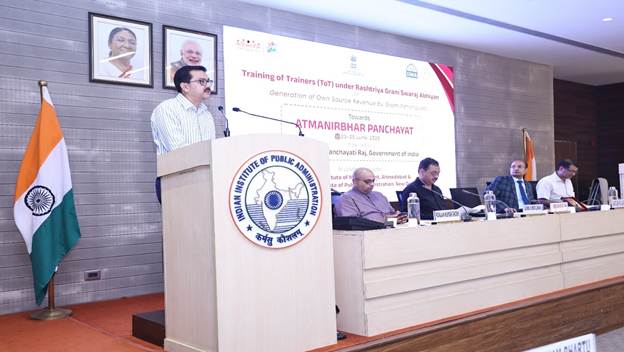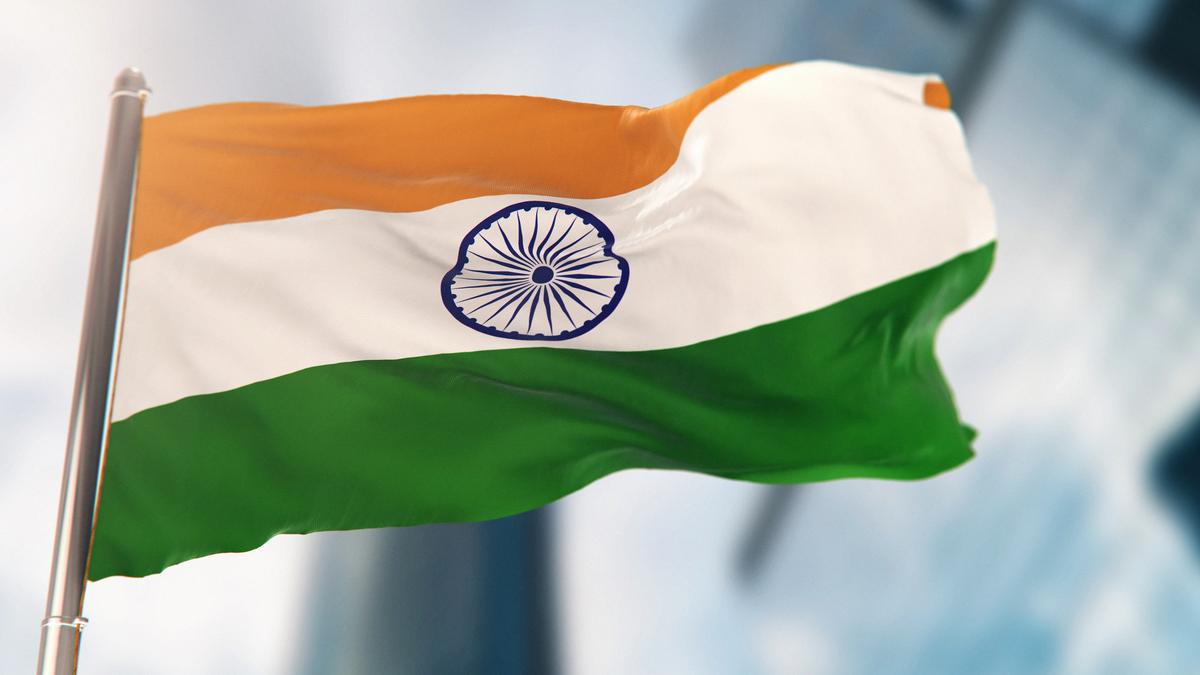Haemophilia A
- 27 Jun 2025
In News:
The National Institute of Immunohaematology (NIIH) has indigenously developed a simple, affordable, and rapid point-of-care test kit for the early diagnosis of Haemophilia A and Von Willebrand Disease (VWD). This development marks a significant step in improving accessible healthcare diagnostics for genetic bleeding disorders in India.
Significance of the Innovation:
- Affordable and accessible: Enables early diagnosis at primary health centres and in low-resource settings.
- Supports Universal Health Coverage: Improves detection and timely treatment, reducing morbidity.
- Make in India in Health Sector: A boost to indigenous biomedical research and diagnostics.
About Haemophilia A
What is it?
- A hereditary bleeding disorder caused by insufficient levels of Factor VIII, a protein essential for blood clotting.
- Part of the broader group of genetic conditions known as inherited coagulopathies.
Causes:
- Deficiency or dysfunction of coagulation Factor VIII in the coagulation cascade.
- Usually inherited through an altered gene passed from parents.
Genetic Transmission:
- X-linked recessive inheritance:
- Males with the defective gene express the disease.
- Females are typically carriers, though they may show mild symptoms.
Symptoms:
- Prolonged bleeding, often seen after circumcision or minor injuries.
- Internal bleeding, particularly into joints, causing pain and swelling.
- Other signs include:
- Nosebleeds
- Blood in stool/urine
- Bruising
- Bleeding after surgery or dental procedures
Treatment:
- Factor VIII replacement therapy: Intravenous infusion of the missing clotting factor.
- Preventive therapy (prophylaxis) to reduce the frequency of bleeding episodes.
About Von Willebrand Disease (VWD)
What is it?
- A genetic bleeding disorder caused by a deficiency or dysfunction of von Willebrand factor (VWF), which helps platelets stick together to form blood clots.
Causes:
- Inherited from one or both parents.
- People with VWD have:
- Low levels of VWF, or
- VWF that does not function properly.
Symptoms:
- Often asymptomatic unless triggered by injury or surgery.
- Common symptoms include:
- Easy bruising
- Frequent nosebleeds
- Bleeding gums
- Heavy or prolonged menstruation (menorrhagia)
- Post-operative bleeding
- Severe cases may show:
- Internal joint bleeding
- Blood in urine (hematuria)
- Blood in stool (melena)
Treatment:
- No cure, but manageable with:
- Desmopressin (DDAVP) to release stored VWF.
- VWF and Factor VIII concentrates.
- Self-care measures to reduce bleeding risks.
Household Income Survey in 2026

- 27 Jun 2025
In News:
The Ministry of Statistics and Programme Implementation (MoSPI) has announced that India will conduct its first nationwide Household Income Survey in 2026, marking a major milestone in the country’s data-driven policymaking framework.
What is the Household Income Survey?
- A comprehensive, nationwide survey aimed at collecting reliable and robust data on household income distribution across India.
- It is the first standalone survey focused specifically on income estimation, unlike earlier efforts that focused primarily on consumption and employment.
Key Implementing Bodies:
- Ministry of Statistics and Programme Implementation (MoSPI)
- National Sample Survey (NSS)
- Technical Expert Group (TEG)
Historical Background:
- 1950: National Sample Survey (NSS) established to conduct large-scale household surveys.
- 1955–1970: Income data attempted in the 9th, 14th, 19th, and 24th NSS rounds but faced challenges such as underreporting.
- 1983–84: A pilot income study failed to produce scalable data due to low income estimates relative to consumption and savings.
- Past difficulties deterred the launch of a dedicated income survey—until now.
Key Features of the 2026 Survey:
- First of its kind: India’s first survey exclusively focused on household income distribution.
- Methodologically robust: Designed by the TEG, incorporating international best practices in conceptual design, sampling, and estimation.
- Use of digital tools: Integration of technology-driven data collection methods to improve precision, timeliness, and reflect the role of digital economy in income generation.
- Built on recent statistical reforms by MoSPI in areas like:
- Unincorporated enterprise surveys
- Services sector data
- Private capital expenditure
- Tourism satellite accounts
Significance of the Survey:
- Addresses a critical data gap in understanding income inequality, disparities, and growth trends.
- Supports evidence-based welfare policies, including targeted subsidies, social protection, and fiscal redistribution.
- Enhances India’s capacity for inclusive growth assessment and SDG tracking.
- Strengthens the country's statistical infrastructure, aligning it with global standards.
Training of Trainers (ToT)Programme

- 27 Jun 2025
In News:
In a significant move to strengthen grassroots governance and fiscal autonomy, the Ministry of Panchayati Raj (MoPR) has launched a Training of Trainers (ToT)programme in collaboration with the Indian Institute of Management (IIM) Ahmedabad and the Indian Institute of Public Administration (IIPA). The initiative aims to enhance the capacity of Panchayats to generate Own Source Revenue (OSR) under the Rashtriya Gram Swaraj Abhiyan (RGSA).
Key Objectives:
- Enhance financial self-reliance of Panchayati Raj Institutions (PRIs).
- Build a cadre of Master Trainers equipped to train Panchayat-level functionaries.
- Shift local governance from a compliance-based model to proactive planning, innovation, and community engagement.
- Promote a culture of fiscal accountability, transparency, and efficient public service delivery at the grassroots level.
Core Focus Areas of Training
- Fundamentals of Own Source Revenue (OSR)
- Revenue enhancement strategiestailored to rural contexts
- Behavioural insights in tax collectionand compliance
- Revenue utilization for development and service delivery
- Village-level financial planningand Gram Panchayat Development Plans (GPDPs)
- Innovative financing mechanisms
- Project management and accountability tools
The training emphasized field orientation, peer learning, and evidence-based practices to ensure real-world applicability and long-term impact.
Institutional Reforms and Digital Integration
As part of the broader reform agenda:
- Model OSR Rules Framework is under development based on state-level legislative reviews.
- A Digital Tax Collection Portal is being created to facilitate:
- Simplified and accountable revenue collection,
- Digital integration with Panchayat-level financial systems.
Case Studies & Best Practices
The training showcased successful Panchayat-level revenue generation models from:Odisha, Gujarat, Goa, Uttar Pradesh, Maharashtra, and the Andaman & Nicobar Islands, highlighting scalable models of local innovation.
Rashtriya Gram Swaraj Abhiyan (RGSA): Background
A Centrally Sponsored Scheme (CSS) launched in 2018 and revamped for 2022–2026, aimed at developing and strengthening the Panchayati Raj System across rural India.
Key Objectives:
- Build governance capacity of PRIs to achieve Sustainable Development Goals (SDGs).
- Empower Panchayat representatives for effective leadership and participatory governance.
- Enhance OSR generation and financial planning at the Panchayat level.
- Promote inclusive development and convergence of schemes.
- Strengthen Gram Sabhas as platforms for citizen engagement.
Salient Features:
- Emphasis on capacity-building and leadership training.
- Promotes decentralisation and compliance with the PESA Act, 1996.
- Encourages use of technology-driven solutions for governance.
- Recognises and incentiviseshigh-performing Panchayats.
- Facilitates collaboration with international and national institutions.
Ambubachi Mela 2025
- 27 Jun 2025
In News:
Thousands of devotees have congregated at the Kamakhya Temple in Guwahati, Assam, to participate in the annual Ambubachi Mela—one of the largest and most significant religious gatherings in Northeast India.
About Ambubachi Mela
- Timing: Celebrated annually during the monsoon season, typically in June.
- Location: Held at the Kamakhya Temple, situated atop Nilachal Hill in Guwahati, Assam.
- Religious Significance:
- Marks the menstrual cycle of Goddess Kamakhya, symbolising the fertility of Mother Earth.
- During this period, the sanctum sanctorum is closed for three days, after which it is ceremonially reopened for darshan.
- Cultural Symbolism:
- Reflects ancient beliefs that associate the Earth with feminine fertility.
- The word ‘Ambubachi’ translates to ‘water flowing’, indicative of both the monsoon rains and the goddess’s fertility.
Kamakhya Temple: Key Facts
- Spiritual Importance:
- Dedicated to Goddess Kamakhya, an incarnation of Shakti.
- Considered one of the most revered sites of Tantric Shaktism in India.
- Recognised as one of the 51 Shakti Peethas, where the yoni (womb) of Sati is believed to have fallen.
- Geographical Location:Located on Nilachal Hill, overlooking the southern bank of the Brahmaputra River.
Architectural Features of Kamakhya Temple
- Architectural Style:
- Combines traditional Nagara style with Saracenic (Mughal) architectural elements, known as the Nilachala Style of Architecture.
- Temple Layout:
- Only temple in Assam with a fully developed ground plan.
- Comprises five main sections:
- Garbhagriha (sanctum sanctorum)
- Antarala (vestibule)
- Jaganmohan (assembly hall)
- Bhogmandir (offering hall)
- Natmandir (performance hall)
- Distinctive Structural Elements:
- Main dome: Modified Saracenic style.
- Antarala: Features a two-roofed structure.
- Bhogmandir: Crowned with five domes, echoing the central shrine.
- Natmandir: Designed with a shell-shaped roof and apsidal end, similar to the namghars (prayer halls) of Assam.
SDG Index 2025

- 27 Jun 2025
In News:
India has ranked 99th out of 193 countries in the Sustainable Development Goals (SDG) Index 2025, marking the first time it has entered the top 100. India scored 67 in the index, as per the Sustainable Development Report 2025 released by the U.N. Sustainable Development Solutions Network.
About the Sustainable Development Report 2025
- Publisher: U.N. Sustainable Development Solutions Network.
- Objective: Tracks annual progress on the 17 Sustainable Development Goals (SDGs) adopted by all UN member states in 2015.
- Coverage: 193 countries.
- Relevance: Assesses national performance across economic, social, and environmental dimensions of sustainability.
Key Highlights of the 2025 Report
Global Trends
- SDG Progress Stalled Globally: Only 17% of the SDG targets are projected to be met by 2030.
- Barriers to Progress: Conflicts, structural vulnerabilities, and constrained fiscal space are key impediments.
- Top Performers:
- Finland ranks 1st, followed by Sweden (2nd) and Denmark (3rd).
- However, many European nations face serious challenges related to climate change and biodiversity loss, due to unsustainable consumption patterns.
Regional Insights
- East and South Asia have shown the fastest progress since 2015, attributed to rapid socioeconomic development.
- India’s Achievement: Ranked 99th, entering the top 100 for the first time.
Sectoral Progress and Setbacks
- Areas of Strong Progress Globally:
- Access to electricity (SDG 7)
- Use of mobile broadband and internet (SDG 9)
- Reduction in child and neonatal mortality (SDG 3)
- Areas of Reversal Since 2015:
- Rising obesity rates (SDG 2)
- Decline in press freedom (SDG 16)
- Poor sustainable nitrogen management (SDG 2)
- Worsening Red List Index (biodiversity loss – SDG 15)
- Weakening Corruption Perceptions Index (SDG 16)
Commitment to Multilateralism
- Top 3 Countries Committed to UN Multilateralism:
- Barbados
- Jamaica
- Trinidad and Tobago
Notable National Rankings
- Brazil (25): Highest among G20 nations.
- Chile (7): Highest among OECD countries.
